Many things have been happening in the aftermath of the Bridgewater canal breach which occurred in the early hours of New Years Day 2025 where the navigation crosses the River Bolin valley. The location is just a short distance from the National Trust’s Dunham Massey house. This past couple of days there’s been a Boater’s meeting with the canal management and they announced plans that would see the stranded boaters moved off the stricken sections of canal. This will involve the construction of coffer dams in order to rescue the stranded boats (see the Warrington Guardian and Warrington Worldwide). The boats on the east side of the breach (three in all) will be seen to first and then the larger number of boats (24 in all) on the western side of the breach will be dealt with. This post is a follow up to the one published on 4th January 2025.
The reason for this arrangement is no doubt due to the fact the eastern side is easier to deal with and that because there’s stop planks that have to be dealt with. The 24 or so boats on the west side of the breach will have to wait a bit longer because the canal is sealed off with a bund (an earth dam) and that will take some work to remove sufficient material to enable water to pass slowly onto the empty sections of canal, and then no doubt some more work to remove completely in order to allow the boats to pass to relative safety.
Its said once these coffer dams are in place the canal will very slowly be filled, with the work commencing on on 20th January 2025. When its said very slowly, its because they don’t want another incident to occur and the very slow, indeed incremental, filling of the canal will allow canal workers to assess the state of the remaining bits of canal that have not been damaged – thus ensuring its structural integrity is not compromised. After all the towpath has been seen collapsing on sections unaffected by the breach, so that (and other concerns too) is why the authorities are progressing very slowly in terms of refilling the necessary sections of canal. Its thought this filling could take a number of weeks which means the first boat movements may not be until February at the earliest.
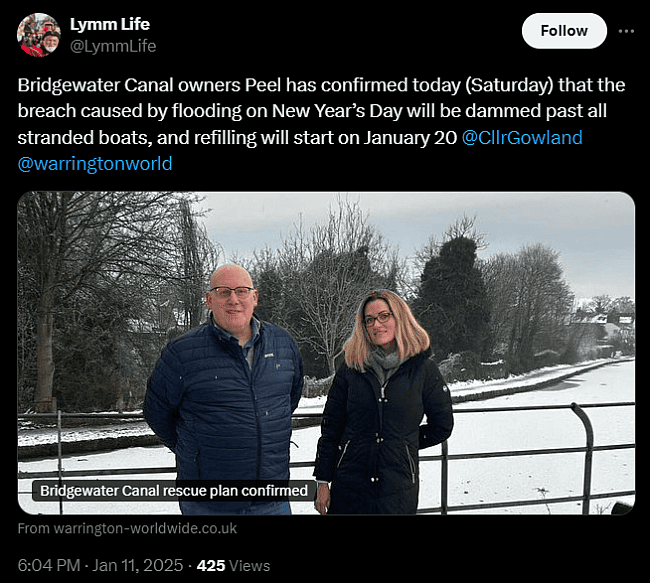
The relevant sections of canal will start to be filled from 20 January 2025. Twitter/X.
Local councillor Graham Gowland (pictured above) has said the Bridgewater canal’s director has asserted the breach will be repaired and reinstated as a through navigation though the question of course is when. (Canal World).
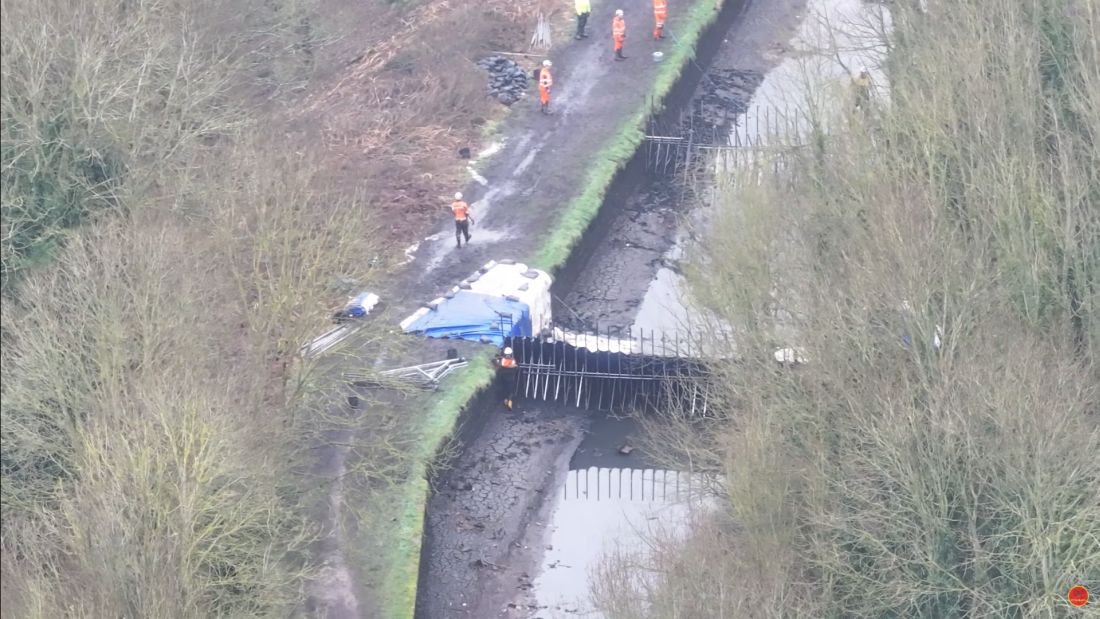
Coffer dams are being built on the east side of the breach closest to the Bolin aqueduct. As the picture shows, two dams are being built. Given the difficulties that were seen in establishing a pair of dams ether side of the breach and a second set had to be placed at Dunham School Lane (plus a bund had to be placed on the west side because the integrity of the planks at Agden bridge were suspect, they’re not taking any chances by having a single coffer dam, hence the two being built! Youtube.
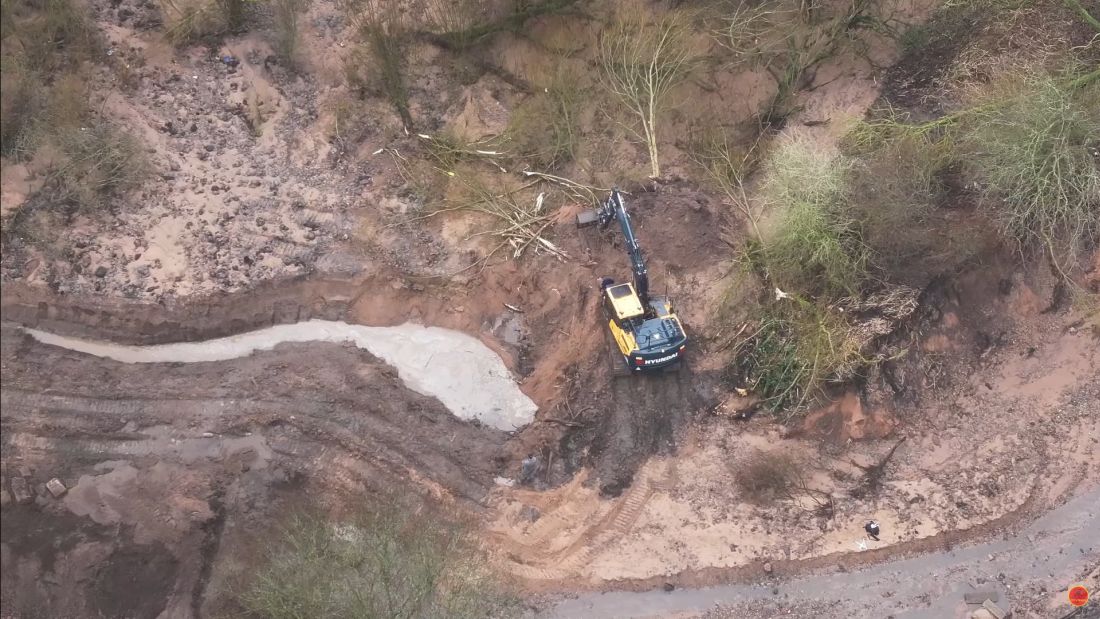
There is some work underway as of today (14th January 2025) with a digger being observed removing some of the embankment – what this is for isn’t known because so far, no work on the destroyed embankment sections has officially begun. Its likely related to the culvert that passed underneath the canal at this point. Youtube.
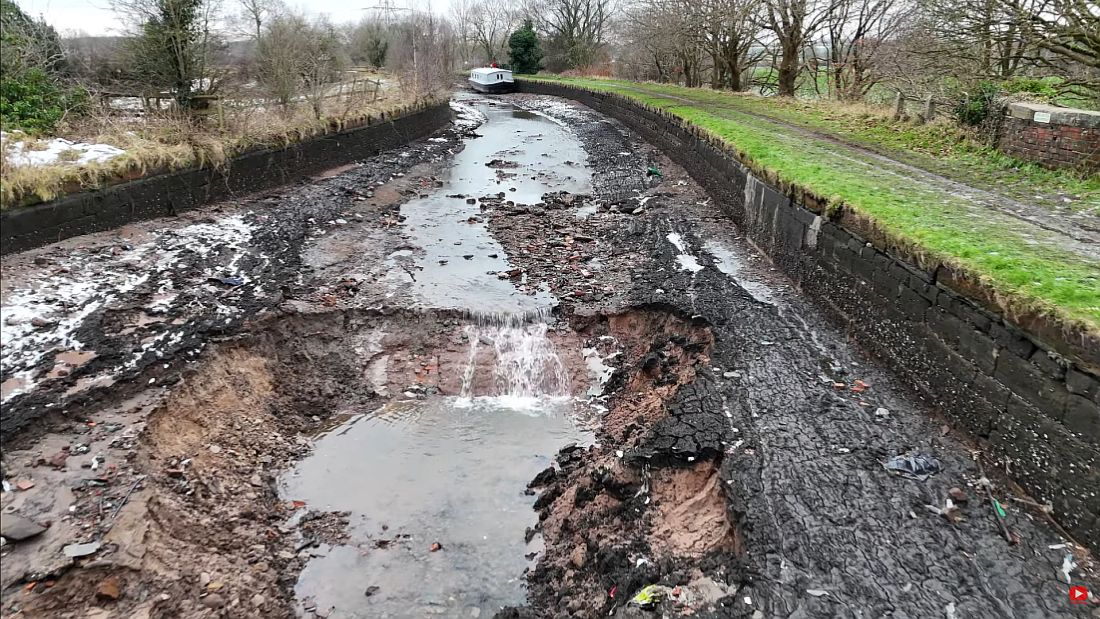
Its clear the Park Lane aqueduct has been compromised. The top of the arch that is over the road which passes beneath is almost completely exposed and freshly exposed brick (no doubt damaged somehow) can be seen to the left of the centre of channel. Youtube.
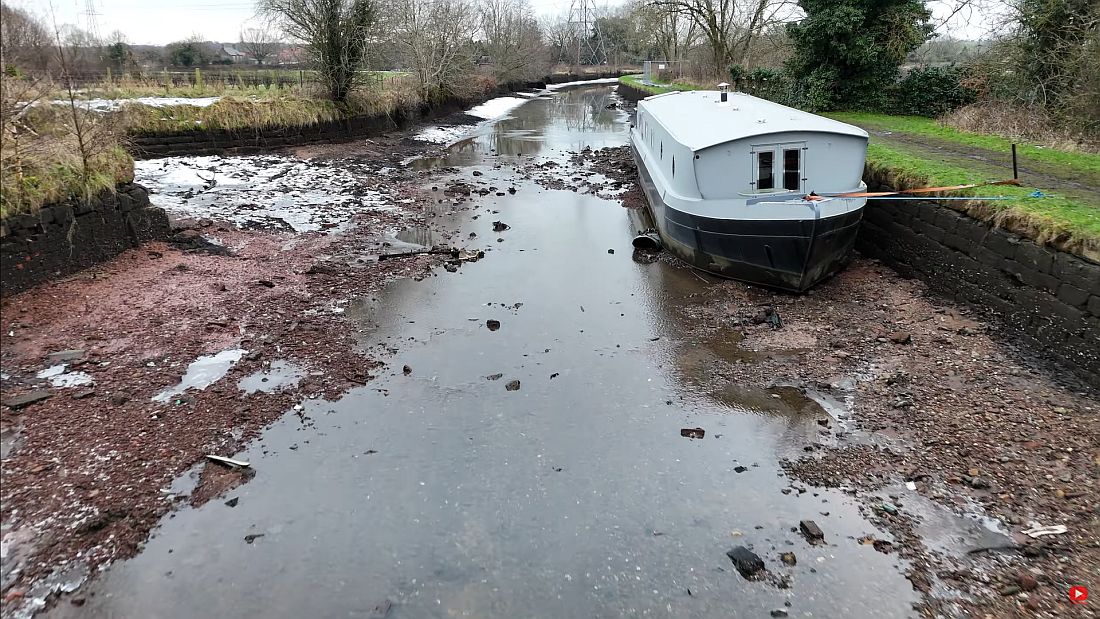
The widebeam that has been stranded just west of the aqueduct. The space to the left is a winding hole. Behind the boat can be seen fencing that is meant to prevent people venturing along the towpath towards the breach. Youtube.
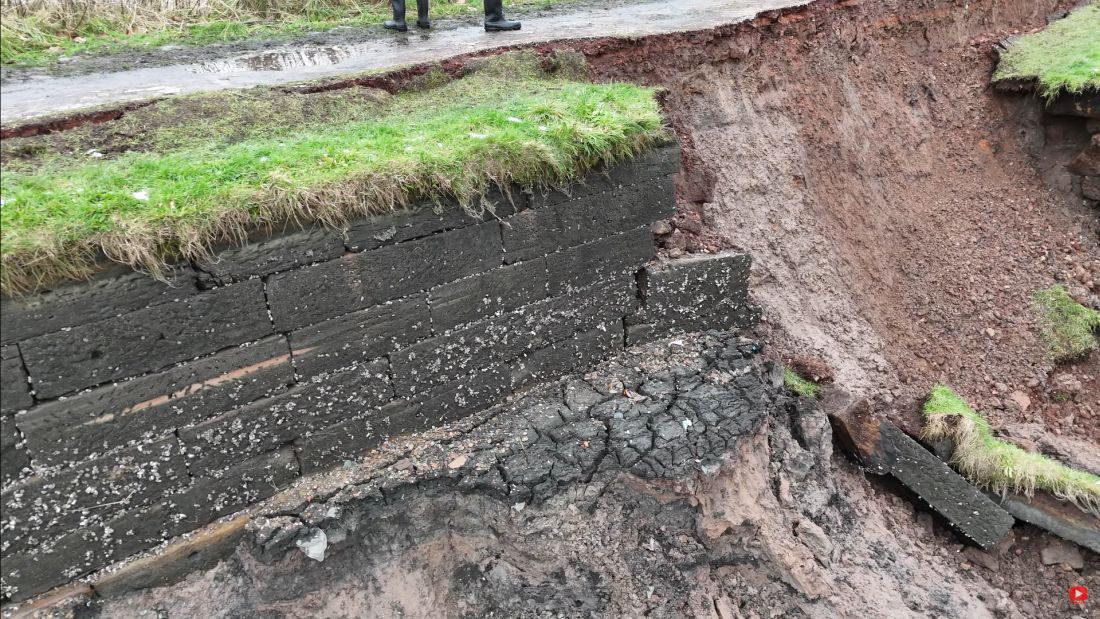
The large stones that line the sides of the canal are very evident here. Evidently the canal was meant to be wide and deep (and indeed it was as yours truly can assert) when compared to others. Youtube.
Most of the canals (especially the narrow ones) were built with a saucer shaped profile except at locations where trade would occur and then these places would have deep sides. In a way the continuity of the deep sided profile of the Bridgewater canal is the antithesis of what most of the canals engineered by James Brindley were like, but then conversely most of the canals around Manchester were broad anyway because of the very heavy traffic the area generated. In essence the main part of the canal system contains narrow canals centred around the Midlands to a style conceived by James Brindley – and this was because they were cheaper to build – but not only that the terrain, compared to the Bridgewater, was more challenging and lock flights and long tunnels were the order of the day, thus in most cases a narrow canal proved cheaper to build than a broad canal.
Here’s a list of London Rail’s other posts with a canal flavour:
The Bridgewater canal breach (2025)
The Cromford canal at Butterley (2024)
Daneway (Thames & Severn canal) (2024)
The Paddington shop that wasn’t there! (2024)
Tis wasn’t Robert Browning’s doing! (2022)
King’s Cross tunnels and canal aqueduct (2021)
Thomas Telford in detail (2021) includes Pontcysyllte, Chick aqueducts and Neptune’s staircase
Brindley at Wet Earth Colliery (2020) including Fletcher’s canal
Whatever happened to Brunel’s bridge? (2019)
The Coventry Canal (2019)
Toddbrook reservoir (2019)
The Grand Surrey Canal (2018)
